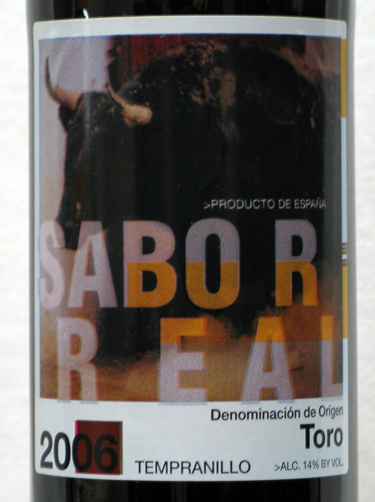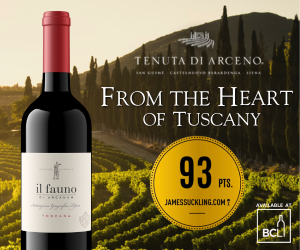By the time the Vancouver Playhouse International Wine Festival comes to an end in early April, you should be a lot more comfortable drinking Spanish wine.

Spain grows a variety of grapes but the revered tempranillo remains its calling card and like many other important varieties in Europe that over time are "adopted" about the countryside, tempranillo has more aliases than a con man.
It is said the Spanish have counted some 552 different clones of tempranillo spread across the countryside, reflecting centuries of accidental mutations and field selection in the vineyard. If its origins begin in Rioja, the grape that thrives in heat and drought has spread with impunity to most corners of the Iberian Peninsula.
In La Rioja, Navarra, Somontano and the Levante, it is known by its international moniker tempranillo. But in La Mancha it's known as cencibel, south of Madrid it's referred to as valdepeñas. Ull de Llebre (eye of the hare) is its Catalonian name; it's called Tinta de País or Tinto Fino in Ribera del Duero, and Tinta de Toro in Toro. Across the border in nearby Portugal, it is called Aragonês in Alentejo and Tinta Roriz in the Douro.
That tempranillo is an adaptable grape is clear, but it has an even more attractive quality. Its name comes from the Spanish word "temprano" meaning early, or in this case, early ripening, always an attractive proposition for winemakers seeking complex flavours by working in cooler, more marginal vineyard sites where harvest weather is variable.
Hence tempranillo's ability to ripen early is crucial in the higher elevations in Rioja and along the cool north facing slopes in the Ribera del Duero where complexity reigns. In warmer areas like Toro, tempranillo puts on weight and in the modern age tends to have more new oak thrown at it to temper its rough edges.
Its most famous expression is in the rich, velvety red wines of La Rioja, where it can be blended with garnacha tinta, mazuelo and/or graciano and then aged traditionally in American oak -- although lately more and more French oak is in play.
Today we look at a cross-section of tempranillo-based wines you can experiment with before the festival starts.
A surprising offering is the Anciano Gran Reserva Tempranillo Aged 7 Years 2002 from Valdepeñas. You get a lot of wine for $13, including an attractive spicy, black olive, garrigue nose with flecks of saddle leather, almonds, black cherry and barnyard aromas. The entry is tempranillo supple and dry with good fine acidity. On the palate, black cherry, prunes and savoury licorice flavours reign with funky hints of leather. A solid, balanced tempranillo style with light tannins you can drink now. Unbelievable value.
A simple but easy-drinking expression is the Torres Coronas Tempranillo 2006 from Catalunya. A bit of cabernet bolsters the belly of this wine that presents with a spicy, tobacco, earthy, olive nose, a soft, dry, elegant palate and plenty of black cherry, plum, cedar and orange notes with an earthy, spicy finish. A simple, fresh, food-friendly style with finesse. Affordable at $15.
The Sabor Real Tempranillo 2006 from Toro, Spain garnered 90 points from noted U.S. wine reviewer Robert Parker. Sun drinkers will recognize it more as an 87 point wine and at $17, it does represent good value. Look for an attractive spicy licorice, black-cherry nose with notes of vanilla and orange. The entry is ripe and fuller than tempranillo from Rioja or Penedès with round, fresh, warm, smoky fruit with bits of meat, black cherry, orange peel and licorice. A rich, round, warm red but with a fresh, fruity underbelly. Try with roast lamb or other grilled meats.
The decade old Anciano Gran Reserva Tempranillo Aged 10 Years 2000 from Valdepeñas is another winner that is ready to drink. The nose has an intriguing spicy, curry, meaty, gamy, cherry-jam aroma with smoky, floral, saddle leather and stewed black tea. Fine acidity and soft tannins mark the mid-palate followed by peppery, tobacco, smoky cherry and dried herbs flavours. A touch lean and chunky on the finish but with intensity and length. Drink now with rare beef. Super value. Look for this at Everything Wine stores only.
Eternum Viti 2008, another Toro tempranillo is made from 30- to 40-year-old Tinta de Toro vines, 50 per cent of which is aged in new French oak barrels. Expect an inky black, red wine with a dollop of vanilla on the nose and bits of earth and black fruits. The palate is smooth and warm with more blackberry/blueberry fruit flavours. This wine needs five years to really come around but lamb chops would easily tame its fine grained tannins if you want to drink it now.
We finish with another well aged Spanish red Vina Mayor Reserva 2004 from Ribera del Duero. Look for a slightly cooler, spicy, meaty, leather, cherry-jam nose with floral, carrot top and resin aromas. The palate is slightly lean and tannic but with juicy acidity and bright cherry, plum fruit with cedar, tobacco, savoury, smoky and resin flavours. The finish is firm and dry, calling for a grilled piece of meat or an old piece of hard cheese.
Weekend Tasting: Tempranillo
Anciano Gran Reserva Tempranillo Aged 7 Years 2002, Valdepeñas, Spain
Price $13
UPC 005060108901451
Score 89/100
Remarks Solid, balanced tempranillo style with light tannins. Unbelievable value.
Torres Coronas Tempranillo 2006, Catalunya, Spain
Price $15
UPC 008410113003546
Score 86/100
Remarks A simple, fresh, food friendly style with some finesse.
Sabor Real Tempranillo 2006, Toro, Castilla-Leon, Spain
Price $17.00
UPC 08437009707500
Score 87/100
Remarks Rich round and warm but with a fine fresh fruity underbelly.
Anciano Gran Reserva Tempranillo Aged 10 Years 2000, Valdepeñas, Spain
Price $18 Everything Wine only
UPC 00858828001323
Score 90/100
Remarks Delicious aged peppery, tobacco, smoky, meaty, cherry flavours.
Eternum Viti 2008, Toro, Castilla-Leon, Spain
Price $25
UPC 008437002948153
Score 91/100
Remarks Put this one in the cellar for five years.
Mayor Reserva 2004, Ribera del Duero, Castilla-Leon, Spain
Price $29
UPC 00084159000296
Score 88/100

 quicksearch
quicksearch





